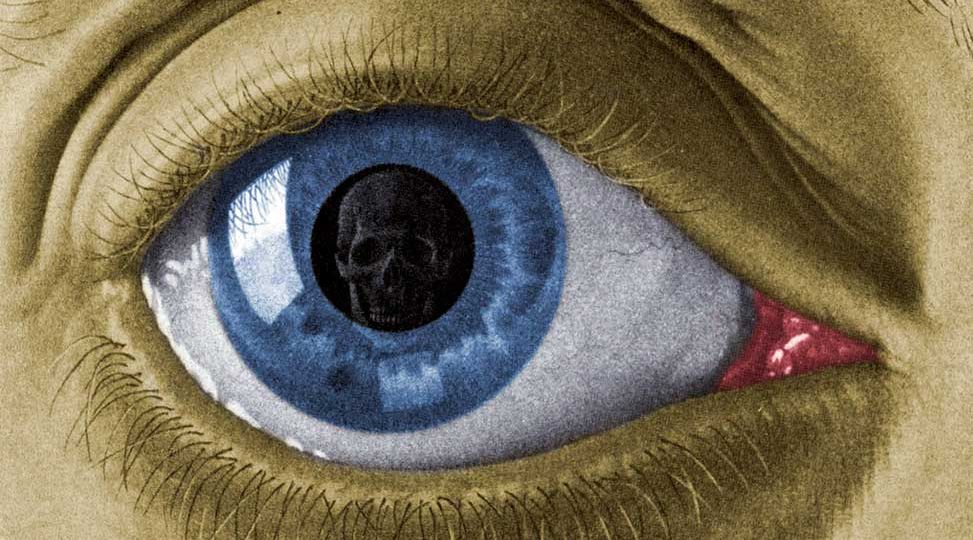
Shrines by the Wayside
INFJ Becoming Whole
Tarrin Anderson, March 19, 2020
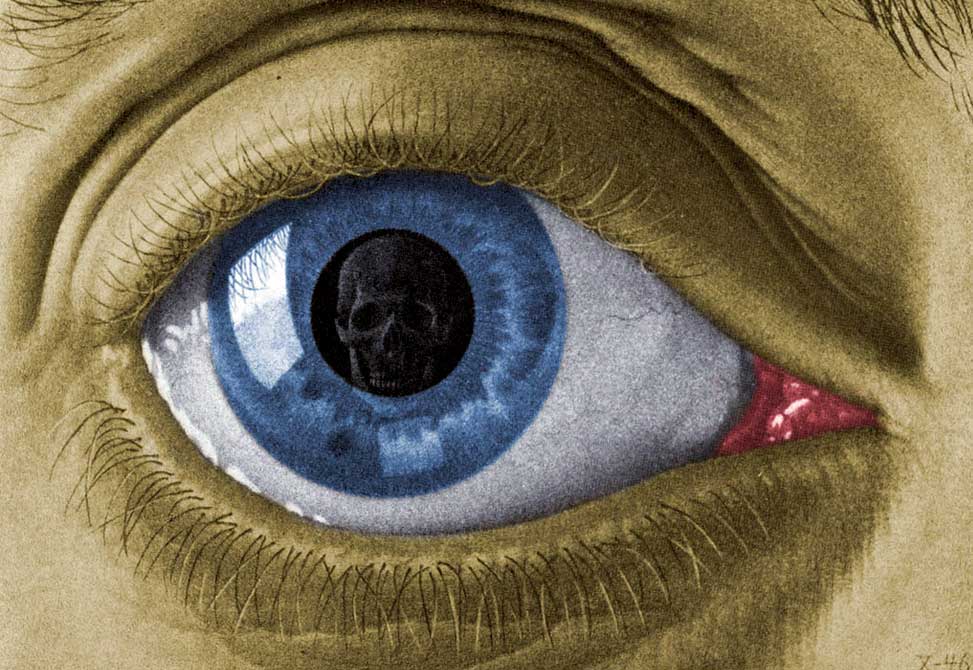
The Inferior Function as Guardian of the Unconscious
The inferior, or fourth, function guards the doorway between consciousness and the unconscious, acting as a bridge from one to the other, operating outside of our control but opening us to depths we previously had not known. In Psychological Types, C.G. Jung (1921/1971) said: “The essence of the inferior function is autonomy: it is independent, it attacks, it fascinates, and so spins us about that we are no longer masters of ourselves and can no longer rightly distinguish between ourselves and others” (¶ 85). The inferior function draws us to our collective state, drops us into the primordial darkness and animal-likeness of that which is undeveloped and overwhelming. The inferior function contains “our wounds and always certainly our deficits,” according to Jungian analyst Ann Ulanov (2009). “Those are the unlockable doors where whatever wants to come in, whether a god or the rhino, can reach us at any time” (p. 18). In the fourth function we have no defenses. We are vulnerable to the contents of the unconscious, which is what makes us dread this particular function. However, we cannot avoid it. Psychotherapist Angelo Spoto (1995) recognized that “the confrontation with the inferior function is not something a person generally seeks out. In fact, more often than not, it is the inferior function that comes after you. You bat it away; it comes back again . . . and again” (p. 4). The inferior function behaves like the idiot youngest son in fairy tales, yet also provides the bridge to the unconscious, bringing renewal to consciousness (Beebe, 2004, p. 90).
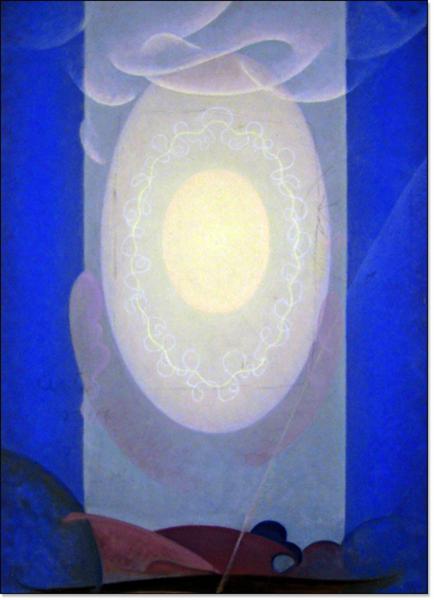
In order to individuate, to become a whole individual in relation to the collective, one must integrate the inferior function. The problem of the inferior function, however, is that it resists integration into consciousness. The nature of the superior function is to take away energy from the inferior function, causing the inferior to fall into unconsciousness where “it is prone to be activated in an unnatural way, giving rise to infantile fantasies and a variety of personality disturbances” (Sharp, 1936/1987, p. 23). Marie-Louise von Franz (1971/2013) noted the danger of trying too hard to reach the fourth function directly: “The fourth function will pull ego-consciousness down to a completely primitive level. One may identify with it and its impulses absolutely; then there will occur those sudden switches in which people suddenly drop down to an animal level” (p. 81). In this case one does not assimilate the function—one only acts it out.
Integration is a disquieting experience. Ulanov (2009) explained that assimilating the inferior function “feels like symbolic death because it radically changes our personality. That which was neglected is now honored; that which was despised and avoided now has a seat at the table; that which we feared now brings us unsuspected gifts” (p. 21). Allowing ego-identified aspects of our personality to die brings upheaval to consciousness. We start to ask, “Who am I really? Am I who I have thought myself to be, or am I something or someone else entirely?” The beauty, of course, comes with surrender. When we surrender to the gifts of the inferior function, allowing it to walk beside us hand-in-hand rather than dragging it behind us like some burdensome weight, consciousness shifts, a new view opens before us, and the world becomes a different place because we have allowed ourselves to become different in its presence.
Breakdown and Renewal of the INFJ
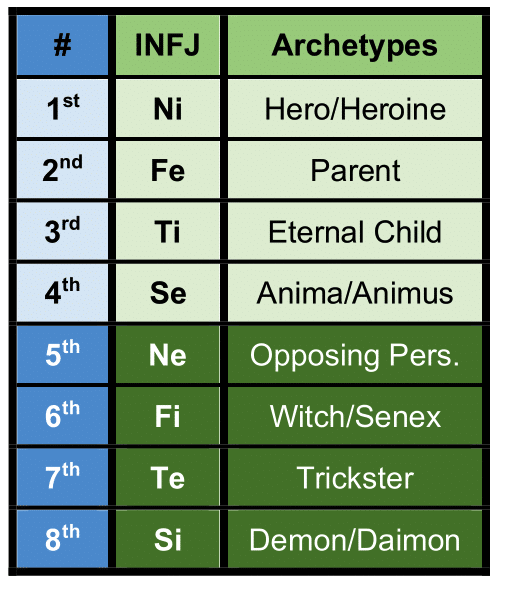
As an INFJ raised in the Roman Catholic church, following my family’s transition to non-denominational Christianity, I grew up hearing “the voice of God,” which to my young ears sounded very much like the voice of my father. The God voice embodied the rigidity of my completely unconscious trickster, extraverted thinking (Te), the function that for me behaves like the cartoon character, Wile E. Coyote, creating traps for the RoadRunner; moreover, the Te function falls in the parent or auxiliary position for my father—a large, strong masculine character who knows a definitive right from wrong, believes in the reality of heaven and hell, and lives always in alignment with his rigid moral code. My INTJ father and ISTJ mother both hold extraverted feeling (Fe), my parent function, all the way down in their seventh, completely unconscious, trickster position. While I naturally relied on my extraverted feeling function’s desire to nurture positive relationships, my parents didn’t trust Fe’s motivation to promote harmony and take care of others. Feeling-based values to them were inferior and even dangerous. Only thoughts could be trusted. A Bible verse my parents use to this day to support their Te preference comes from Jeremiah 17:9: “The heart is deceitful above all things, and desperately wicked: who can know it?” (King James Version). I was taught that the heart, the historic and mythical center of feeling-values, would only lead me astray. Therefore, the religious attitude that would have been natural for me was suppressed in favor of one based in extraverted thinking’s rules and absolutes. As my unconscious trickster, my internalized Te sense of God’s will put me in the double-bind of not being permitted to develop and act on my own evaluations of people’s needs, including my own. Instead, I learned to use Fe to navigate what seemed to me a strange, limited, thought-based environment. I transformed, chameleon-like, to suit family dynamics, oftentimes ignoring my own intuitive needs to focus on living up to moral standards, which, unsustainably, was like trying to keep a house warm by lighting myself on fire. My father’s parenting, to my extraverted feeling function, felt like oppression; thus the God voice became oppressive, too. I craved harmony, both inner and outer, but since I was engaged in deep inner conflict, I chose removal. I wandered far away from religion, trying to leave the God voice behind.
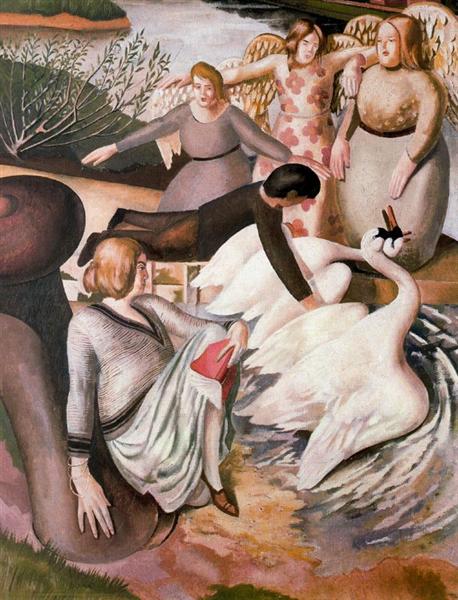
After my program ended, I started an intentional community in my home town of Phoenix, Arizona, but only a few months into the endeavor, a dear friend and housemate dropped out. Suddenly, irreconcilable differences in social justice theory and application made themselves apparent, and I fell in love with the last remaining housemate (who became an excellent screen for my animus projection). My several-year-long vision of intentional community crashed. Instead of regrouping, restructuring, and trying again, I fell into a deep depression. Burnout from trying to maintain my persona, a critical trickster virtually immobilizing my Fe auxiliary, and an emerging inferior extraverted sensing function (Se) catapulted me into a darkness I could not foresee. Depression, an open void in the ground beneath my feet, swallowed me completely.
Depression, though, however painful and debilitating, is a calling of soul. Founder of archetypal psychology, James Hillman (1975) said,
Through depression we enter depths and in depths find soul. Depression is essential to the tragic sense of life. It moistens the dry soil, and dries the wet. It brings refuge, limitations, focus, gravity, weight, and humble powerlessness. It reminds of death. The true revolution begins in the individual who can be true to his or her depression. Neither jerking oneself out of it, caught in cycles of hope and despair, nor suffering it through till it turns, nor theologizing it—but discovering the consciousness and depths it wants. So begins the revolution in behalf of soul. (p. 98-99)
In terms of typology, depression can manifest when the inferior function begins to break into consciousness, when the soul or self begins making itself known, when the charade of the persona can no longer hold, when wholeness seizes attention. The revolution begins as the inferior function rises. For me, my neglected inferior function of extraverted sensing, which tells me that the world is a physical place and that I am a physical being, broke through my intuitive and theoretical knowings, landing me squarely in the world as it is and not as I wished it to be. Community was harder to create than I had hoped and planned; vision was failing; I was not perfect, nor could I ever be; and the inner critic was louder than ever—a letdown on every level.
For those with introverted intuition as their primary function, extraverted sensing is in the inferior position and thus possesses an archaic character, full of instinct, animal-likeness, and intemperance, combined with a dependence on sense impressions (Jung, 1921/1971, ¶ 663). Extraverted sensing, repressed in the INFJ because it is in opposition to the dominant function, hinders intuition and directs attention away from the inner world to the external world via sensory stimuli. Intuition attempts to see through the concrete to the metaphoric and is unable to function effectively when extraverted sensation draws it to tangible reality (¶ 611). The INFJ, therefore, has little consciousness of her own body, her effect on others, or the physical world in which she resides. Vision is what matters to her, connections and inspiration that grab her from the inside. Jung (1961/1963) said, sounding very much like an INFJ, in Memories, Dreams, Reflections, “Recollection of the outward events of my life has largely faded or disappeared. But my encounters with the ‘other’ reality, my bouts with the unconscious, are indelibly engraved upon my memory” (p. 5). The inner world pulls an INFJ, while concrete reality can throw her vision askew. When the inferior function begins to break into consciousness, it “resembles an inner breakdown” and acts as “an important bridge to the experience of the deeper layers of the unconscious” (von Franz, 1971/2013, p. 78). But before it can restructure the personality, the inferior function behaves like a hungry wolf, devouring the personality (p. 79). For an INFJ, hungry wolf behavior may look like an obsession or overindulgence in sensations, a preoccupation with the physical world: overeating, engaging in reckless or excessive sexual experiences, or clinging rigidly to the physical environment.

The childishness of my inferior function flung me back to memories of childhood. Even as a child, I needed momentary concrete connections to the eternal world to ground and center me, even if only for a minute, with extraverted sensing. My mother remembers that as a child I had a place for everything. If anyone moved my dolls and stuffed animals out of their designated places, I would put them back. I needed my external world to be orderly and dependable so I could follow my intuition. I remember lying in bed and reaching out to touch the wall, just to know it was there, just to remind myself that I was there. Extraverted sensing also showed up more playfully in my fascination with external reality and in my childhood crush, Grizzly Adams. Grizzly Adams, played by Dan Haggerty, a projection of my inner animus, held all the positive qualities of extraverted sensing: he was in direct relationship with nature, physically capable, a real “chop wood and carry water” kind of guy, and I admired him for those qualities I did not seem to possess. Concrete reality sparked my intuition: the shimmering scales of the fish my neighbor gutted in his backyard seemed to tell me stories. The feathers, fur, and slick wet skin of the animals I caught in my backyard mesmerized me. Moments full of extraverted sensation created, as Jung described, shrines by the wayside.
After the intentional community fell apart and depression swallowed me whole, I moved with my partner to Australia where extraverted sensation became my saving grace. Von Franz (1971/2013) stated that “the inferior function is actually the connection with one’s deepest instincts, with one’s inner roots, and is, so to speak, that which connects us with the whole past of mankind” (p. 77). When one is able to connect with the inferior function and honor its wisdom, integration becomes possible. In the grip of depression, I allowed the inferior function to gain some traction. As Sharp (1936/1987) explained, “The process of assimilating the inferior function, ‘raising’ it into consciousness, is invariably accompanied by a ‘lowering’ of the superior or primary function … the intuitive becomes fascinated with sound, color, texture, and ignores possibilities” (p. 24). I was still gripped by depression because I could not engage with my lowered introverted intuition, the function I had relied on to guide me in every decisive moment of my life. In my struggle I turned to the external world and allowed my inferior function to provide “new potential for life. Everything in the realm of the inferior function [became] exciting, dramatic, full of … possibilities” (von Franz, 1971/2013, p. 21).
In Australia I learned to touch the earth. I walked around the neighborhood touching flower petals, lovingly gazing at dancing leaves, watching ants march and bees fly. I aimed my camera at the small world beneath the trees and under the grass. I became obsessed with creating a new wardrobe aesthetic on Pinterest (an online image board). I started making jewelry. I wrote. I drew. I made collages from old magazines. I lay for hours on a yoga mat outside in the sun, feeling like I was meeting my body for the first time, like maybe I was actually seeing the world in all its glory for the first time. I marveled. Von Franz (1971/2013) said the only way to really deal with the inferior function is “by putting it into a spherical vessel, by giving it a frame of fantasy … by giving it the possibility of a fantasy expression, whether in writing or painting or dancing or in any other form of active imagination” (p. 81). We have to give the inferior an imaginal outlet, somewhere to showcase itself, before we can integrate it into the personality. Moving my body, capturing beauty through my camera, journaling about my external experiences, and creating physical objects with my hands all gave fantasy expression to the inferior function wanting to be made known. For six months I worked as a barista in a local coffee shop, touching, tasting, seeing, and hearing the world. The sensation of mist lingered on my skin as I hiked through the Glass House Mountains; sand gave way beneath my feet at Mooloolaba Beach; exotic plants exploded with color as I walked, eyes truly open, through the rainforest—ordinary moments when the inferior function broke through, when I found my connection to “the sensate facts of life” (Sharp, 1936/1987, p. 25). Each experience with my inferior function became a shrine by the wayside, an altar to the external world.
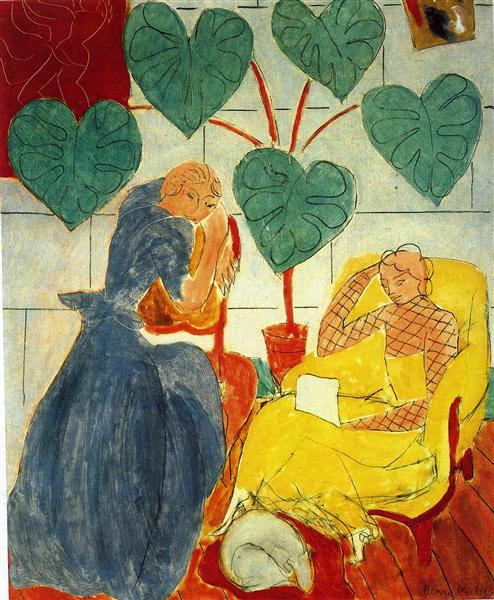
Two years after my initial fall into depression, I began reading Clarissa Pinkola Estes and Marion Woodman who introduced me to depth psychology, a homecoming in many ways. One internet search for the term “depth psychology” led me directly to Pacifica Graduate Institute, where I immediately applied, was accepted, and began my studies in Jungian and Archetypal psychology. Pacifica offered me a safe container in which to develop supportive rational functions. Jung said that in order to cushion the blow of the unconscious contents coming up from the inferior function, “an irrational type needs a stronger development of the rational auxiliary function present in consciousness” (Sharp, 1936/1987, p. 25). Socially, my supportive cohort held the space I needed to develop a healthy relationship with my rational auxiliary extraverted feeling function. Rather than allowing me to fall prey to the self-denying tendencies I had learned in my family environment, each member of the cohort provided appropriate emotional and energetic boundaries, asking for and supporting my intuitive insights, helping me create new practices that reflect my authentic self: I offered tarot readings without fear of being shamed or condemned, I learned to say no without guilt, and I found the voice to my anger and frustration, all because I knew I was safe in my relationships. After an unexpected tragedy, my entire cohort surrounded me, offering me space to honor my grief, silence to process, and energy healing to move the emotions inside my body. With their words and actions, they gave me permission to show up as I was, not as who they wished me to be. Through this small community, instead of sacrificing my needs in order to bring harmony to the group, I learned to reflect on my own desires, ask for help when I struggled, and eventually offer my presence from a full and even overflowing sense of completeness.
Through graduate work I began to engage more seriously with my rational puella aeterna function: introverted thinking (Ti). The thinking function acts like a judge: “when intuition and sensation fight he can detach himself from the fight by thinking” (von Franz, 1971/2013, p. 28). Introverted thinking follows facts back into the subject, valuing “development and presentation of the subjective idea, of the initial symbolic image hovering darkly before the mind’s eye,” which it aims to shape into a “luminous idea” (Jung, 1921/1971, ¶ 628). For an INFJ, introverted thinking finds external facts through extraverted sensing then pulls them into the inner world where introverted intuition plays with their meanings, creating a bridge for the functions. In the tertiary position, introverted thinking is not quite able to function as an adult but is playful, finding joy and sparks of creativity in abstract theory, following philosophical flights from branch to branch, and sometimes creating whole new systems by doing so. I let introverted thinking loose on the playground of graduate work as I researched theories, compiled resources, and created new thought-collages of ideas. Through a two-year program, I learned that when introverted intuition pulls me too far inward and extraverted sensation pulls me too far away from my inner world, auxiliary extraverted feeling offers me a way of being with others in the external world while introverted thinking finds joy in juggling ideas without having to concretize them into reality.
As I contemplated continuing my studies as a PhD candidate at Pacifica, I went in for a routine medical procedure due to a family history of cancer. Over the course of a twelve-hour preparation, my body responded dramatically, causing me intense pain and exhaustion. I could not think. I could not connect. Weak and depleted in the bathtub, I felt my bones turning to sand. In complete surrender, I asked my body what she wanted from me. She responded with an inner whisper, “I will give up on you if you keep going. You have ignored me for too long.” I knew she was right. For two years in school I had been frolicking on the playground of intuition and introverted thinking, still ignoring my body’s needs as I had done for so much of my life, again suppressing extraverted sensing. I intuited that if I were to continue in the doctoral program, my body would become ill. Craving my attention, my body spoke. My sensing function became alert, active, and observant, while my superior introverted intuition anticipated the possibilities ahead and drove the decision to end my studies.
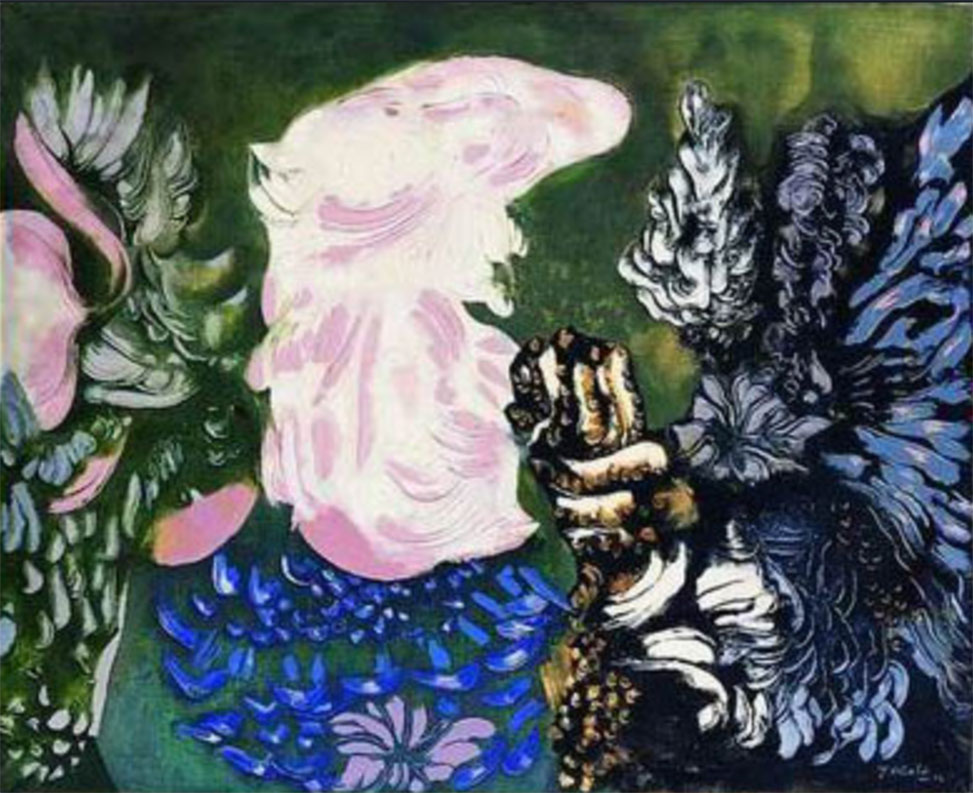
I notice now that each function has much more of a conscious voice, playing its particular role in relation to all the rest. Introverted intuition still leads the way, but now with input from the other functions. When an INFJ writes, dances, creates art, or even just rearranges the furniture in the house, the extraverted sensing function shines. Researching or creating a blueprint for a project gives the introverted thinking third function the support it needs. Expressing her desires and needs allows the INFJ to develop authentic relationships that satisfy extraverted feeling. Perhaps an INFJ must go through a dark night of the soul to begin integrating lower functions into consciousness. There is no simple or comfortable way to engage with that which is closest to the shadow, only a courageous leap into an unknown abyss.
My descent into the proverbial underworld of the unconscious, as well as the ascent back into a more integrated personality, offers an example for all of us who struggle with moving through the world. Our superior function can lead us astray when it is not in healthy relationship with our other functions. We cannot live a one-sided life; a fall is inevitable for our own becoming. However, knowing this, we can consciously acknowledge the other functions, giving them space to play in the world in ways that support our wellbeing. Engaging the lower functions assists our blossoming into wholeness through every choice we make. We can choose wholeness. We can choose hope, our whole personality becoming a shrine by the wayside, an altar to life.
References
Beebe, J. (2004). Understanding consciousness through the theory of psychological types. In J. Cambray & L. Carter (Eds.), Analytical psychology: Contemporary perspectives in Jungian analysis (pp. 83-115). Brunner-Routledge.
Hillman, J. (1975). Revisioning psychology. HarperCollins Publishers.
Jung, C. G. (1965). Memories, dreams, reflections (A. Jaffe, Ed.) (R. & C., Winston, Trans.). Vintage Books. (Original work published 1961)
Jung, C. G. (1971). Psychological types (R. F. C. Hull, Trans.). In H. Read et al. (Eds.), The collected works of C. G. Jung (Vol. 6). Princeton University Press. (Original work published 1921)
Sharp, D. (1987). Personality types: Jung’s model of typology. Inner City Books. (Original work published 1936)
Spoto, A. (1995). The inferior function as a moral issue. In Jung’s Typology in perspective. Chiron Publications.
Ulanov, A. (2009). The danger and the treasure of the inferior function, Psychological Perspectives, 52:1, 9-23. https://doi: 10.1080/00332920802662229
von Franz, M. -L. (2013). The inferior function. In M.-L. von Franz & J. Hillman, Lectures on Jung’s typology. Spring Publications. (Original work published 1971)
Images
Escher, M. C. (1946). Eye color. Retrieved from wikiart.org
Hérold, J. (1972). Skin of the air. Retrieved from wikiart.org
Matisse, H. (1938). The conservatory. Retrieved from wikiart.org
Pelton, A. L. (1961). Light center. Retrieved from wikiart.org
Rousseau, H. (c. 1875). Landscape with bridge. Retrieved from wikiart.org
Spencer, S. (1933). Separating fighting swans. Retrieved from wikiart.org








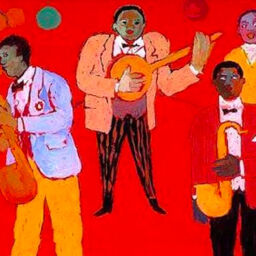


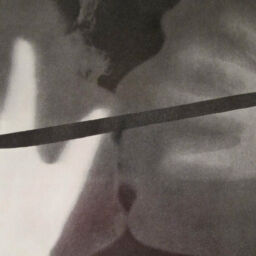
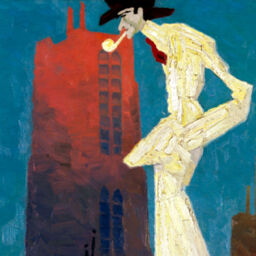
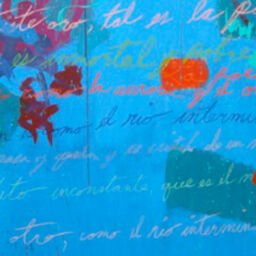
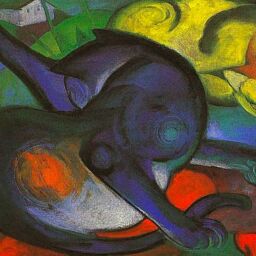

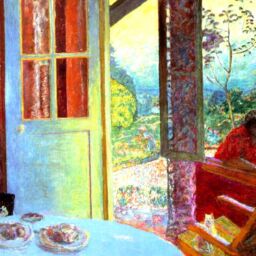

Catholic INFJ & trying to make sense of my shadow’s role as I navigate through depression and an overall feeling of “this is not me”.
I found your page trying to better understand Beebe’s Eight Function Model. There is an uncanny similarity in comparing your journey with mine.
Thank you for outlining everything and connecting the dots so eloquently as to what purpose each step served. I too believe the dark times can be so meaningful towards our development. I hope you are well.
Thanks again!